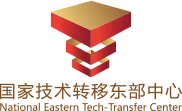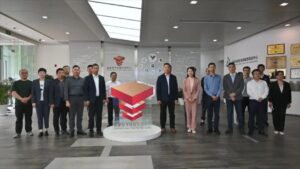Intellectual property (IP) is not an unfamiliar concept today, but at the same time, the IP service industry is developing rapidly as enterprises pay more and more attention to IP. At the same time, as enterprises pay more and more attention to intellectual property rights, the intellectual property service industry is also developing rapidly. At such a time when the industry is booming, I believe that the whole intellectual property service industry is brewing a profound change and is on the edge of a change, and we are standing on the edge of tomorrow. Every company in the IP services industry that does not actively embrace and participate in this change will be weakened in the process. Only those service companies that have deeper insight into their niche industries and the ability to renaissance and synthesize and integrate them to describe the competitive IP landscape across the industry will ultimately survive. The starting point for this insight is an in-depth patent analysis of the industry segment.
About last night's discussion of the Tao and the Art.
Three years ago, I first explained my understanding of patent analysis in a salon at East China University of Political Science and Law. At that time, I searched through most of the literature to find a slightly more precise and scientific definition of patent analysis. But I found that no book could describe patent analysis in a way that made it seem that way. Many books describe patent analysis in terms of "a systematic process" or "a scientific method". And as we know, what kind of theory would not be considered systematic or scientific? Most of the literature and books use the words "a systematic process" and "a scientific method" to describe it.
In my view, there is no fundamental difference between a patent analysis practice and the audit practice of a traditional accounting firm. Our definition of a patent analysis should be similar to that of an audit by an accounting firm.

The so-called systematic process is the process of objectively obtaining and evaluating patents and related analytical evidence from the analytical objectives, providing professional opinions, forming analytical reports, and communicating the results to interested users.

The so-called scientific method is to take the patent analysis objective as a starting point, plan the patent analysis work, form an analysis plan, use information technology and sampling tools to obtain sufficient and appropriate analysis evidence, and leave a working draft in each step of the work.
Discussion of the Tao and the Art

By defining and practicing patent analysis, I hope to rid the public of the impression that patent analysis is equated with graphs and charts, and with statistics, which obscures the essence of patent analysis as a consulting business that provides value to clients. In other words, I hope that we will not only focus on the "showy" and the "art" itself, but also neglect the more fundamental aspect of the "way". After several years of practice, we have accumulated a large number of cases in which we have solved specific problems for clients through patent analysis. For patent analysis, we have a deeper view and understanding.
In my opinion, what we need to focus on now is not the "art", nor even the "way", but standing in the present and seeing what will happen to the industry tomorrow. What I want to talk about is the issue of "potential".
Standing here now, what happens tomorrow?

What will be the "momentum" of tomorrow's industry? I believe that "disruption" is inevitable for the IP services industry. Back in 2013, the Harvard Business Review published an article by Clayton Christensen, the founder of the "disruptive innovation" theory. That year, he and a group of industry leaders hosted a roundtable discussion at Harvard Business School about the dangers of disruption for professional consulting firms. Through conversations with a number of industry leaders, their clients, academics and those who study these organizations, they ultimately came to the conclusion that "disruptive innovation has swept through industries from steel to publishing, and now that the same forces are reshaping the entire consulting industry, disruption is only a matter of time. In order to avoid being disrupted, traditional consulting organizations need to rethink their service models and experiment with new consulting models in order to disrupt their core businesses".


Currently, many of the services that we perform are designed to fulfill a client's need to simply provide a solution to one of their inherent problems. In this model, the client pays for our services and we price our time.
This traditional model, which aims at solving inherent problems, will be replaced by a new model in this process of disruption.
The client's interest has shifted from how much time you spend and therefore how much you are paid; to how much value you actually bring to me and therefore how much I pay you. In this model, we stand in the client's value chain and help them think about how they can use IP as a tool and a means to help them gain a competitive advantage and get more value out of it.
A few years ago, our clients had almost "nothing" in the IP field, they didn't know what value we could bring to them, we sold our inherent services, and they paid us on the basis of recognition of our workload.
Once upon a time, the client had nothing.

We have now found that our customers' problems have become more diverse, and many of them are not on our regular business list. In order to meet these needs, we have to become "young jack-of-all-trades" and have to deal with more segmented markets and tougher competition in those segments.
This is just the beginning, and in the future, the number and diversity of IP needs that clients will be able to raise will inevitably increase. This is a huge challenge for IP service companies with a traditional business focus.
Today, there are too many demands from customers.

The IP service needs that our clients are able to articulate to us are still only the tip of the iceberg in relation to their value-generating activities. A large number of intellectual property issues related to value generation are not even discovered, not defined, and not clearly proposed to service organizations. In the future, the opportunity for disruption, the real blue ocean of the industry, does not lie in the tip of the iceberg that is already visible on the surface of the sea, but in the much larger iceberg that lies beneath the surface of the sea, in the unknown issues that clients are not yet aware of.
The future is just the tip of the iceberg.

Perhaps the question is how do we discover the unknown problems that even our customers have yet to discover and define?
See the future with foresight.

I guess my answer is to be foresighted and see the future. Now is the time to really take an industry perspective and use patent analysis work to identify opportunities under the iceberg and articulate to our clients how they can use IP as a tool to really add value. We hold this view because we agree that there is bound to be a megatrend in the industry. A promising technology, from its inception, is bound to have a process of turning sand into pearls.
Just as we all agree that the development of modern information technology started with primitive technologies like the electron tube and transistor, and evolved step by step to integrated circuits, microprocessors, operating systems, computers, networks, virtualization, cloud computing, smart devices, and even the popular apps of the day.
A journey of a grain of sand


If we look at a longer time dimension, there is indeed a typical path for the development of industry technology, with major trends to speak of. As the sand forms pearls, at a number of important points in time, numerous exuding technologies settle down and continue to wrap around the core, which becomes the foundation for the continued growth of the next generation of technology.
To cite a case, we once did a patent analysis for a domestic listed company, and the subject of the analysis was Polycom, a leader in the field of audio and video communications. From a longer timeline, Polycom started with AT&T's chips, and every strategic transformation reflected in its products was accompanied by patent placement and acquisitions for the purpose of technology complementation.
We can clearly see that Polycom has focused on audio conferencing since its inception in 1992, video conferencing in 1997, VoIP in 1999, high-definition audio and video communications in 2003, wireless networks and mobile devices in 2006, and unified communications and cloud computing since 2009. Often, the products are not yet available, but the related technologies are already being deployed.


Of course, you may ask, does patent analysis really help us to capitalize on this megatrend? My answer is, to a large extent, of course we can. Especially nowadays, if we know the industry segments well enough, if we conduct continuous research based on patent analysis, and if we know the past and the present, it is possible for us to clearly map out the technological lineage in the form of patents. Rationalization of resources.
In this process, of course, we should not just rely on patent evidence alone, but we should start with patent evidence, integrate other industry data intelligence, and ultimately develop best practices that guide our clients to help them use IP to accomplish value-add in their value realization activities. For example, tell the client what you should be developing, what patents you should be laying out, and which companies you should be acquiring.

In my opinion, the future trend of this industry is to lead other high-end consulting services with niche-oriented and in-depth patent analysis as a starting point.
This is what I was saying at the beginning of this article, that only those service companies that have deeper insight into the industries they target, and the ability to do a renaissance-style synthesis and consolidation, and then describe the competitive IP landscape of the entire industry, will ultimately survive, and we are standing on the edge of such a tomorrow.






